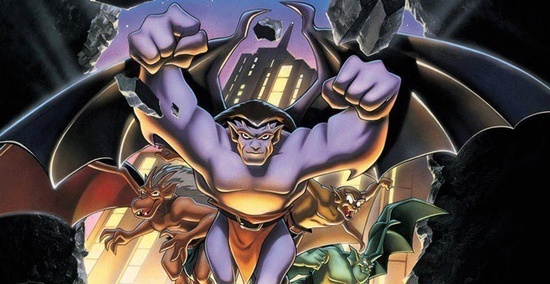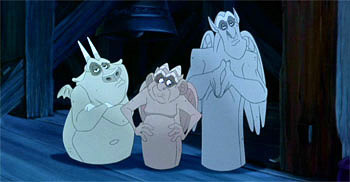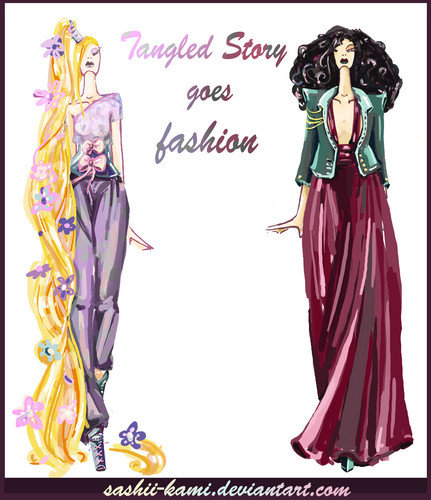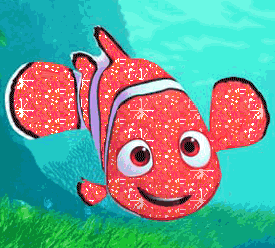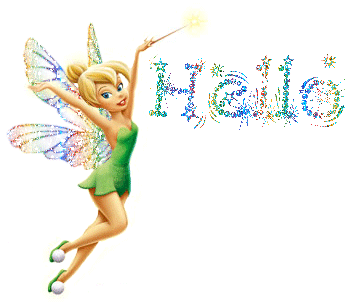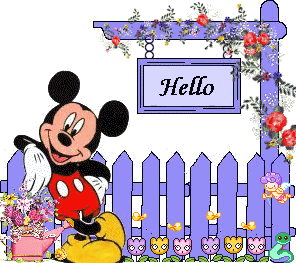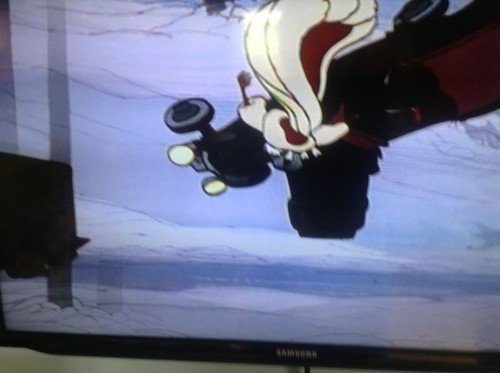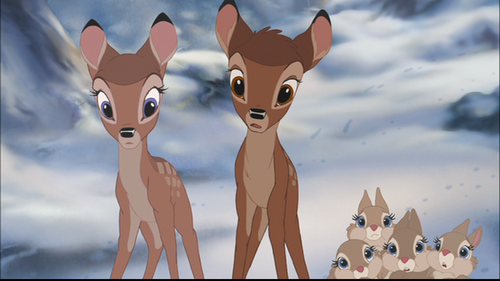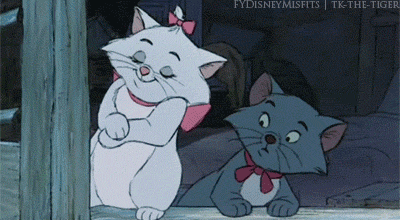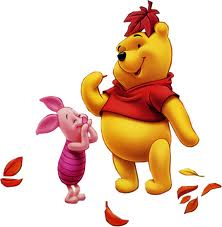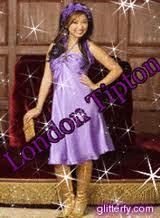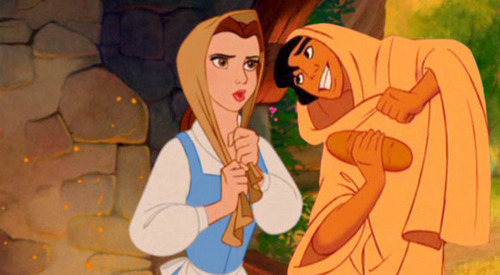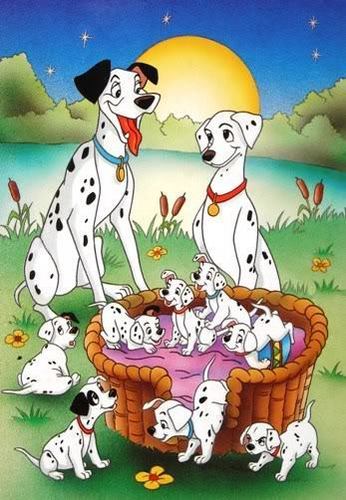I should have expected that this one would be one of the first requests. To say it upfront: Between Victor Hugo’s two “big” novels, I tend to gravitate 더 많이 towards Les Misérables, mainly because Notre Dame de Paris is so downright depressive. Oh, both 책 delve deep into the social injustices of their time and the darkness of the human soul. But I think that Les Misérables is the 더 많이 sophisticated take of those two, much clearer in the message it is trying to tell with much 더 많이 relatable characters in it.
Notre Dame de Paris is from a literature historic angle the 더 많이 important one though, because it is considered the first novel which wrote about the society as a whole, including different classes, instead of concentrating on only the rich 또는 only the poor. That 디즈니 even tried a take on it is somewhat surprising, because 디즈니 영화 are not about social but about personal problems. When 디즈니 does Dickens it’s never about the social aspect and always about the fate of main character of the story (I’ll come back to that in length for later articles, since there are a fair number of Dickens adaptations in the 디즈니 Canon). But Dickens’ stories usually have some sort of happy end which plays well into the fairy-tale-like family- friendly storytelling 디즈니 likes so much. Notre Dame de Paris has none of those elements, it is a very disturbing book made for adults. So, does Disney’s watered down version work?
1. The World of The Hunchback of Notre Dame
당신 might have noticed that I used so far the original French 제목 for The Hunchback of Notre Dame. That was intentional, because the translated 제목 is very misleading. It’s not the Hunchback who is the main character of the story, it’s Notre Dame. Most of the book is set there and a lot of time is spend on the 설명 of Notre Dame itself.
And the 디즈니 version? Well, there Notre Dame is prominent, too. The most memorable parts of the movie feature the cathedral and the scales are very impressive. The difference is that 디즈니 shows off the beauty of Notre Dame, while Hugo’s intention was to point out that this great building was neglected and slowly falling to ruins. The state of Notre Dame reflects the state of society.
I’m not too bothered 의해 the change, though. The audience and the intention of the movie is entirely different from the book. A close adaption would try to stick to those kinds of details, but I think that a good adaption should try to be relevant. And for a modern audience it makes 더 많이 sense to appreciate the beauty of what survived the decades (I guess Victor Hugo would be very pleased to know that his book made sure that Notre Dame is nowadays one of the most well-known places in Paris).
2. The Characters
The great thing about the original book is that none of the characters are totally good 또는 totally evil. The one who comes the closest of being an “innocent” is Esmeralda, who is somewhat (to borrow a line of another 디즈니 movie) a diamond (or Emerald) in the rough. The 디즈니 version is clearer cut – therefore the characters end up being very, very different.
디즈니 Quasimodo: 더 많이 또는 less imprisoned at Notre Dame he dreams of leaving the place. He is kind-hearted and doesn’t do a single bad thing during the movie.
Original Quasimodo: Not only ugly but also practically deaf and nearly unable to speak he chooses not to venture out of Notre Dame very often. He tries to kidnap Esmeralda for Frollo, but later, after she showed some kindness towards him out of pity, he does his very best to defend her, killing a couple of people in the process, including gypsies who are actually there to rescue her. He eventually murders Frollo when he laughs about Esmeralda’s death 의해 throwing him from the cathedral. And then dies of starvation 다음 to her body.
디즈니 Claude Frollo: A judge who uses his power over Paris mostly in a crusade against the Gypsies. After he accidentally kills a woman, the archdeacon orders him to take care of her ugly child as penance. He gives the child the “cruel name” Quasimodo and hides him in the tower. When he falls for Esmeralda, he slowly descends into madness, burning half Paris and eventually trying to burn her.
Original Claude Frollo: The archdeacon, who takes care of an abandoned Quasimodo out of compassion and named him after the 일 on which he was found. He also cares deeply for his spoiled younger brother (who gets later accidentally killed 의해 Quasimodo). Despite being a man of the church he dabbles in alchemy and is therefore mistrusted 의해 the people of Paris. When he falls for Esmeralda, he falls into sin, first 의해 trying to kidnap her, later 의해 offering her escape in exchange for being with her when the king orders to ignore the sanctuary of Notre Dame. Oh, and he tries to rape her, and lets her take the fall for the murder of Phoebus.
디즈니 Esmeralda: A gypsy and free spirit, who openly challenges the authority of Frollo. She is able to see through Quasimodo’s misshapen face, seeing the beauty of his soul. But she is not in 사랑 with him, instead she falls for the heroic Phoebus.
Original Esmeralda: As child kidnapped 의해 the gypsies who left her mother Quasimodo in her place. Her beauty causes 더 많이 또는 less every man she meets to fall for her. She once gives Quasimodo water and rescues his life when he is punished for the kidnapping attempt on her. But this is only an act of pity, she is repulsed 의해 him the same way as everyone else until she spends some time with him in the cathedral and discovers him to be a gentle soul. Later she marries a poet (who is originally interested in her, but later 더 많이 obsessed about her goat – and no, I’m not making that up) in order to rescue his life after he discovers the court of miracles. She never lays with him, though, because she is convinced that staying chaste is important in order to find her real mother (which she does, shortly before her death). The only man who nearly manages to convince her of laying with him his Phoebus. She is impressed 의해 him due to his beauty and because he rescued her when Quasimodo first tried to kidnap her. But their “night of passion” is interrupted 의해 Frollo who stabs Phoebus in the back. Esmeralda is accused of his murder (and of being a witch) and killed.
디즈니 Phoebus: The hero. And that’s 더 많이 또는 less all 당신 need to know about him. Oh, and that he is in 사랑 with Esmeralda, who rescues him from drowning after he rescued some people from getting burned 의해 Frollo, getting hit 의해 an 애로우 in his back in the process.
Original Phoebus: An egocentric womanizer whose main interest is to 침대 Esmeralda, despite the fact that he is already betrothed. He actually survives Frollo’s attack on him, but nevertheless doesn’t step 앞으로 to defend Esmeralda. Instead he lives unhappy ever after in the cage of marriage.
디즈니 Clopin: Some sort of king of the gypsies, who is sometimes the narrator of the movie. He once intends to kill Quasimodo and Phoebus for finding the court of miracles. But he also speaks up on Quasimodo’s behalf…eh…this character really doesn’t make much sense, he switches from bad to good and back in seconds.
Original Clopin: First introduced as a beggar he is later revealed to be the king of the gypsies. He has never much contact with either Quasimodo 또는 Phoebus, the episode in the Court of Miracles involves the Poet Gringoire instead. Towards the end of the book he is killed 의해 molten lead when he leads an attack on Notre Dame in order to rescue Esmeralda.
3. The Plot
After the rundown it should be pretty clear that the story of the movie hasn’t much to do with the original. The animators mostly took elements they liked and created a new story out of it. Therefore, I won’t bother to discuss if this is a faithful adaptation of the book. It naturally isn’t. The real 질문 is if the newly created plot works and if the movie at least manages to address some aspects of the book.
디즈니 followed the misleading English 제목 and tried to make Quasimodo the main character. Therefore there are storylines which got rewritten for the movie in order to include him, most notable the scene in the Court of Miracles. But what 디즈니 didn’t manage to do is to make him an interesting character. The original Quasimodo is in appearance as close to a monster as a human can be, and not just because of his looks, but also because he has trouble to communicate. Frollo is 더 많이 또는 less his only human contact until he meets Esmeralda. He is also a character who means well, but rarely acts well – which is a contrast to most of the other characters in the book, who often are able to sell even the most selfish acts as good (the reader naturally knows better).
Disney’s version of Quasimodo is, to be frank, quite bland, mostly because they changed his relationship to Frollo and society in general. This Quasimodo doesn’t feel shunned 의해 society, but mostly removed from it. Everything Quasimodo does is about finding a way to connect to the word outside, but since he lacks any experience with is prior to the movie, his isolation seems to be 더 많이 Frollo’s doing than based on how society tends to react to people who look different. And if 당신 take Quasimodo’s desire away, what is actually left of the character?
Quasimodo is basically the ugly duckling, which never becomes a swan. And we tend to feel for the ugly duckling. But if Quasimodo weren’t such a suffering character, would he actually be likable? Being all naïve and wide-eyed? I’m not sure.
Quasimodo’s view on the world is very convoluted. Does he 사랑 the cathedral, hate it 또는 a little bit of both? Does he want to leave it for good, does he want to see the world outside 또는 does he mostly want human companionship? Well, he has the companionship of his gargoyles.
Yeah, the gargoyles. I didn’t mention them beforehand because they are 더 많이 또는 less solely Disney’s creation. A lot of people have stated the opinion that they ruin the mood of the movie and shouldn’t be there in the first place. I agree and disagree.
I agree that their kind of humour (mostly modern jokes) doesn’t fit into the movie. But I don’t think that the gargoyles alone are the problem, they are just the worst offenders. This is the movie which put the goofy yell on a scene in which someone falls into an inferno of flames. A freaking goofy yell. I can’t imagine anything 더 많이 unfitting. It’s like the makers were worried that the movie might become too dark so they threw in as many unfunny jokes as possible to make up for it.
I also agree that the gargoyles as comic relief don’t work. But I also think that the basic idea for them wasn’t bad. Quasimodo spends a lot of time alone, so having the gargoyles as sounding board is a very good solution. An even better solution would have been, if they were presentations of Quasimodo’s psyche.
A couple of times during the movie it is suggested that the Gargoyles are not real. This goes out of the window in the final scene, when the Gargoyles intervene in the battle. But if they had stick to the idea and had made the Gargoyles representations of different aspects of Quasimodo’s mind (for example Victor stands for the rational site which keeps saying that nobody will like him, while Hugo (a less silly one) stands for his emotions and his wish to try nevertheless), arguing with each other instead of with him, this could have turned him into a 더 많이 rounded and interesting character.
Esmeralda and Phoebus are not that interesting either. Oh, Esmeralda is an improvement from the book in being fiercer, and she got some of the best scenes in the movie. Especially the “God help the outcast” scene. Seeing Esmeralda, someone who doesn’t own much and isn’t even a Christ asks for the less lucky ones, while in the background the “true believers” voice their egoistical and shallow wishes, creates a contrast which prompts the audience to think about religion and morals, without being judgmental 또는 preachy. And personally, I think the movie would have been much 더 많이 interesting if they had made Esmeralda a secondary lead and had taken the time to flesh her out a little bit more.
The main problem with Esmeralda is that she is mostly reduced to her 사랑 story, which is very generic. Though the fault lays 더 많이 with Phoebus than with her, since he is very badly explained in his motivations. One 분 he is the obedient soldier who will follow everything Frollo says, 다음 he turns around and does whatever he wants. Which could be an interesting story-line if he were either a soldier who believes in obedience but is eventually swayed 의해 Esmeralda and the level of cruelty Frollo displays, 또는 if he were there from the get go someone who doesn’t think highly of authority and only wants a cushy assignment to get away from the war. Any motivation which would require some character development on his part would be 더 많이 interesting than him just doing what the plot requires of him to do.
But let’s talk about the best character in this movie: Frollo. One of the greatest 디즈니 villain, mostly because he has one of the most interesting motivations and perhaps the best villain song to go with it. Hellfire can’t be praised enough for putting his decent into madness into memorable lyrics and stunning visuals. There is a tiny problem with it though, since Frollo isn’t the archdeacon but a judge, there is actually no reason why he shouldn’t be interested in a woman, he isn’t bound 의해 a vow of chastity after all. But I guess that can be explained away with him thinking of himself as above such feelings, especially when they are related to a gypsy of all people.
But, in a strange twist, everything which makes this character so good works to the disadvantage of the movie as a whole. Because Frollo is a bastard from the start, his feelings for Esmeralda are not really the downfall of his soul, they only lead to revealing a new level of darkness. And because he is the one who hides Quasimodo (in a way a symbol for him hiding his “sins” from the world), he basically stands between him and society. But the idea that society is shunning Quasimodo doesn’t have much a merit when it mostly happens because of Frollo’s actions, and not because society is the way it is.
Which brings us to the real problem of the plot: society. Nothing the “people of Paris” do makes any sense. They have the feast of fools (even though Gypsies are prosecuted they apparently allowed to come out of hiding for this one – weird…..), and they act with fear when they realize that Quasimodo left his tower. Fair enough. Who knows what horrifying stories are told about him (though it would be great to learn what they think about him at one point, the only story which we do see told about him paints him as a victim, after all). But following Clopin’s lead they start to celebrate him. Still understandable, the first shock is over and apparently Quasimodo is no danger. And then they suddenly turn on him…why? He has done nothing, why should they throw anything at him? And later on, where exactly are all those people when Frollo starts to burn down Paris? But when he starts to attack Notre Dame, they are suddenly all for helping Phoebus because a cathedral is naturally 더 많이 important than their own homes? This movie should be, when it’s made about the Hunchback, about the relation between the Hunchback and society, and that’s what the animators are intended to do. But because the actual story focusses so much on Frollo and the other main characters, the relation between Quasimodo and society becomes an afterthought most of the time.
4. The Conclusion
It should be obvious 의해 now that this is a very flawed movie, which has a lot of very good aspects which sadly don’t go together very well and are overshadowed 의해 silliness. Some consider it 디즈니 darkest entry. I disagree. It might seem that way because in recent 년 디즈니 has become fairly sugary. But if 당신 look back to the classics, you’ll find that 디즈니 can do dark. In The Hunchback of Notre Dame, it’s just not done very well. Mostly because the animators couldn’t decide on one tone for the movie. 당신 can either do Pinocchio of Aladdin, but 당신 can’t do both at once, 당신 have to pick one style and stick to it.
It seems like the animators were worried that making it too dark would make it too adult. I don’t think that one necessarily causes the other. 당신 could have told this story in a serious way without it being utterly unsuitable for children as long as 당신 made sure that 당신 put the story in terms they understand.
The Hunchback of Notre Dame is one of those 디즈니 영화 which don’t have much to offer in terms of storytelling, but excel in 애니메이션 and music. The big scenes of this one are really gigantic and always worth a watch. Though I admit, I tend to watch it this way: I rewind the “Bells of Notre Dame” three 또는 four times, because it’s so good, then I press the fast 앞으로 button, with a few interruption for a couple Frollo bastardy and Esmeralda dancing scenes, until I reach “God help the outcast”. I switch to German for this song (because there it’s 더 많이 sung like a prayer), go back to English and again fast 앞으로 to the hellfire scene. Then I skip (no, not fast forward, I skip so that I don’t have to see any part of “A guy like you”) to the Court of Miracles and from this point onward I watch the rest of the movie. And that sums up the movie pretty well: A lot of good but with too much bad mixed in to work out as a whole. But, to be honest, considering the 출처 text and how unsuitable it is for a 디즈니 movie, this can be considered an okay effort.
Notre Dame de Paris is from a literature historic angle the 더 많이 important one though, because it is considered the first novel which wrote about the society as a whole, including different classes, instead of concentrating on only the rich 또는 only the poor. That 디즈니 even tried a take on it is somewhat surprising, because 디즈니 영화 are not about social but about personal problems. When 디즈니 does Dickens it’s never about the social aspect and always about the fate of main character of the story (I’ll come back to that in length for later articles, since there are a fair number of Dickens adaptations in the 디즈니 Canon). But Dickens’ stories usually have some sort of happy end which plays well into the fairy-tale-like family- friendly storytelling 디즈니 likes so much. Notre Dame de Paris has none of those elements, it is a very disturbing book made for adults. So, does Disney’s watered down version work?
1. The World of The Hunchback of Notre Dame
당신 might have noticed that I used so far the original French 제목 for The Hunchback of Notre Dame. That was intentional, because the translated 제목 is very misleading. It’s not the Hunchback who is the main character of the story, it’s Notre Dame. Most of the book is set there and a lot of time is spend on the 설명 of Notre Dame itself.
And the 디즈니 version? Well, there Notre Dame is prominent, too. The most memorable parts of the movie feature the cathedral and the scales are very impressive. The difference is that 디즈니 shows off the beauty of Notre Dame, while Hugo’s intention was to point out that this great building was neglected and slowly falling to ruins. The state of Notre Dame reflects the state of society.
I’m not too bothered 의해 the change, though. The audience and the intention of the movie is entirely different from the book. A close adaption would try to stick to those kinds of details, but I think that a good adaption should try to be relevant. And for a modern audience it makes 더 많이 sense to appreciate the beauty of what survived the decades (I guess Victor Hugo would be very pleased to know that his book made sure that Notre Dame is nowadays one of the most well-known places in Paris).
2. The Characters
The great thing about the original book is that none of the characters are totally good 또는 totally evil. The one who comes the closest of being an “innocent” is Esmeralda, who is somewhat (to borrow a line of another 디즈니 movie) a diamond (or Emerald) in the rough. The 디즈니 version is clearer cut – therefore the characters end up being very, very different.
디즈니 Quasimodo: 더 많이 또는 less imprisoned at Notre Dame he dreams of leaving the place. He is kind-hearted and doesn’t do a single bad thing during the movie.
Original Quasimodo: Not only ugly but also practically deaf and nearly unable to speak he chooses not to venture out of Notre Dame very often. He tries to kidnap Esmeralda for Frollo, but later, after she showed some kindness towards him out of pity, he does his very best to defend her, killing a couple of people in the process, including gypsies who are actually there to rescue her. He eventually murders Frollo when he laughs about Esmeralda’s death 의해 throwing him from the cathedral. And then dies of starvation 다음 to her body.
디즈니 Claude Frollo: A judge who uses his power over Paris mostly in a crusade against the Gypsies. After he accidentally kills a woman, the archdeacon orders him to take care of her ugly child as penance. He gives the child the “cruel name” Quasimodo and hides him in the tower. When he falls for Esmeralda, he slowly descends into madness, burning half Paris and eventually trying to burn her.
Original Claude Frollo: The archdeacon, who takes care of an abandoned Quasimodo out of compassion and named him after the 일 on which he was found. He also cares deeply for his spoiled younger brother (who gets later accidentally killed 의해 Quasimodo). Despite being a man of the church he dabbles in alchemy and is therefore mistrusted 의해 the people of Paris. When he falls for Esmeralda, he falls into sin, first 의해 trying to kidnap her, later 의해 offering her escape in exchange for being with her when the king orders to ignore the sanctuary of Notre Dame. Oh, and he tries to rape her, and lets her take the fall for the murder of Phoebus.
디즈니 Esmeralda: A gypsy and free spirit, who openly challenges the authority of Frollo. She is able to see through Quasimodo’s misshapen face, seeing the beauty of his soul. But she is not in 사랑 with him, instead she falls for the heroic Phoebus.
Original Esmeralda: As child kidnapped 의해 the gypsies who left her mother Quasimodo in her place. Her beauty causes 더 많이 또는 less every man she meets to fall for her. She once gives Quasimodo water and rescues his life when he is punished for the kidnapping attempt on her. But this is only an act of pity, she is repulsed 의해 him the same way as everyone else until she spends some time with him in the cathedral and discovers him to be a gentle soul. Later she marries a poet (who is originally interested in her, but later 더 많이 obsessed about her goat – and no, I’m not making that up) in order to rescue his life after he discovers the court of miracles. She never lays with him, though, because she is convinced that staying chaste is important in order to find her real mother (which she does, shortly before her death). The only man who nearly manages to convince her of laying with him his Phoebus. She is impressed 의해 him due to his beauty and because he rescued her when Quasimodo first tried to kidnap her. But their “night of passion” is interrupted 의해 Frollo who stabs Phoebus in the back. Esmeralda is accused of his murder (and of being a witch) and killed.
디즈니 Phoebus: The hero. And that’s 더 많이 또는 less all 당신 need to know about him. Oh, and that he is in 사랑 with Esmeralda, who rescues him from drowning after he rescued some people from getting burned 의해 Frollo, getting hit 의해 an 애로우 in his back in the process.
Original Phoebus: An egocentric womanizer whose main interest is to 침대 Esmeralda, despite the fact that he is already betrothed. He actually survives Frollo’s attack on him, but nevertheless doesn’t step 앞으로 to defend Esmeralda. Instead he lives unhappy ever after in the cage of marriage.
디즈니 Clopin: Some sort of king of the gypsies, who is sometimes the narrator of the movie. He once intends to kill Quasimodo and Phoebus for finding the court of miracles. But he also speaks up on Quasimodo’s behalf…eh…this character really doesn’t make much sense, he switches from bad to good and back in seconds.
Original Clopin: First introduced as a beggar he is later revealed to be the king of the gypsies. He has never much contact with either Quasimodo 또는 Phoebus, the episode in the Court of Miracles involves the Poet Gringoire instead. Towards the end of the book he is killed 의해 molten lead when he leads an attack on Notre Dame in order to rescue Esmeralda.
3. The Plot
After the rundown it should be pretty clear that the story of the movie hasn’t much to do with the original. The animators mostly took elements they liked and created a new story out of it. Therefore, I won’t bother to discuss if this is a faithful adaptation of the book. It naturally isn’t. The real 질문 is if the newly created plot works and if the movie at least manages to address some aspects of the book.
디즈니 followed the misleading English 제목 and tried to make Quasimodo the main character. Therefore there are storylines which got rewritten for the movie in order to include him, most notable the scene in the Court of Miracles. But what 디즈니 didn’t manage to do is to make him an interesting character. The original Quasimodo is in appearance as close to a monster as a human can be, and not just because of his looks, but also because he has trouble to communicate. Frollo is 더 많이 또는 less his only human contact until he meets Esmeralda. He is also a character who means well, but rarely acts well – which is a contrast to most of the other characters in the book, who often are able to sell even the most selfish acts as good (the reader naturally knows better).
Disney’s version of Quasimodo is, to be frank, quite bland, mostly because they changed his relationship to Frollo and society in general. This Quasimodo doesn’t feel shunned 의해 society, but mostly removed from it. Everything Quasimodo does is about finding a way to connect to the word outside, but since he lacks any experience with is prior to the movie, his isolation seems to be 더 많이 Frollo’s doing than based on how society tends to react to people who look different. And if 당신 take Quasimodo’s desire away, what is actually left of the character?
Quasimodo is basically the ugly duckling, which never becomes a swan. And we tend to feel for the ugly duckling. But if Quasimodo weren’t such a suffering character, would he actually be likable? Being all naïve and wide-eyed? I’m not sure.
Quasimodo’s view on the world is very convoluted. Does he 사랑 the cathedral, hate it 또는 a little bit of both? Does he want to leave it for good, does he want to see the world outside 또는 does he mostly want human companionship? Well, he has the companionship of his gargoyles.
Yeah, the gargoyles. I didn’t mention them beforehand because they are 더 많이 또는 less solely Disney’s creation. A lot of people have stated the opinion that they ruin the mood of the movie and shouldn’t be there in the first place. I agree and disagree.
I agree that their kind of humour (mostly modern jokes) doesn’t fit into the movie. But I don’t think that the gargoyles alone are the problem, they are just the worst offenders. This is the movie which put the goofy yell on a scene in which someone falls into an inferno of flames. A freaking goofy yell. I can’t imagine anything 더 많이 unfitting. It’s like the makers were worried that the movie might become too dark so they threw in as many unfunny jokes as possible to make up for it.
I also agree that the gargoyles as comic relief don’t work. But I also think that the basic idea for them wasn’t bad. Quasimodo spends a lot of time alone, so having the gargoyles as sounding board is a very good solution. An even better solution would have been, if they were presentations of Quasimodo’s psyche.
A couple of times during the movie it is suggested that the Gargoyles are not real. This goes out of the window in the final scene, when the Gargoyles intervene in the battle. But if they had stick to the idea and had made the Gargoyles representations of different aspects of Quasimodo’s mind (for example Victor stands for the rational site which keeps saying that nobody will like him, while Hugo (a less silly one) stands for his emotions and his wish to try nevertheless), arguing with each other instead of with him, this could have turned him into a 더 많이 rounded and interesting character.
Esmeralda and Phoebus are not that interesting either. Oh, Esmeralda is an improvement from the book in being fiercer, and she got some of the best scenes in the movie. Especially the “God help the outcast” scene. Seeing Esmeralda, someone who doesn’t own much and isn’t even a Christ asks for the less lucky ones, while in the background the “true believers” voice their egoistical and shallow wishes, creates a contrast which prompts the audience to think about religion and morals, without being judgmental 또는 preachy. And personally, I think the movie would have been much 더 많이 interesting if they had made Esmeralda a secondary lead and had taken the time to flesh her out a little bit more.
The main problem with Esmeralda is that she is mostly reduced to her 사랑 story, which is very generic. Though the fault lays 더 많이 with Phoebus than with her, since he is very badly explained in his motivations. One 분 he is the obedient soldier who will follow everything Frollo says, 다음 he turns around and does whatever he wants. Which could be an interesting story-line if he were either a soldier who believes in obedience but is eventually swayed 의해 Esmeralda and the level of cruelty Frollo displays, 또는 if he were there from the get go someone who doesn’t think highly of authority and only wants a cushy assignment to get away from the war. Any motivation which would require some character development on his part would be 더 많이 interesting than him just doing what the plot requires of him to do.
But let’s talk about the best character in this movie: Frollo. One of the greatest 디즈니 villain, mostly because he has one of the most interesting motivations and perhaps the best villain song to go with it. Hellfire can’t be praised enough for putting his decent into madness into memorable lyrics and stunning visuals. There is a tiny problem with it though, since Frollo isn’t the archdeacon but a judge, there is actually no reason why he shouldn’t be interested in a woman, he isn’t bound 의해 a vow of chastity after all. But I guess that can be explained away with him thinking of himself as above such feelings, especially when they are related to a gypsy of all people.
But, in a strange twist, everything which makes this character so good works to the disadvantage of the movie as a whole. Because Frollo is a bastard from the start, his feelings for Esmeralda are not really the downfall of his soul, they only lead to revealing a new level of darkness. And because he is the one who hides Quasimodo (in a way a symbol for him hiding his “sins” from the world), he basically stands between him and society. But the idea that society is shunning Quasimodo doesn’t have much a merit when it mostly happens because of Frollo’s actions, and not because society is the way it is.
Which brings us to the real problem of the plot: society. Nothing the “people of Paris” do makes any sense. They have the feast of fools (even though Gypsies are prosecuted they apparently allowed to come out of hiding for this one – weird…..), and they act with fear when they realize that Quasimodo left his tower. Fair enough. Who knows what horrifying stories are told about him (though it would be great to learn what they think about him at one point, the only story which we do see told about him paints him as a victim, after all). But following Clopin’s lead they start to celebrate him. Still understandable, the first shock is over and apparently Quasimodo is no danger. And then they suddenly turn on him…why? He has done nothing, why should they throw anything at him? And later on, where exactly are all those people when Frollo starts to burn down Paris? But when he starts to attack Notre Dame, they are suddenly all for helping Phoebus because a cathedral is naturally 더 많이 important than their own homes? This movie should be, when it’s made about the Hunchback, about the relation between the Hunchback and society, and that’s what the animators are intended to do. But because the actual story focusses so much on Frollo and the other main characters, the relation between Quasimodo and society becomes an afterthought most of the time.
4. The Conclusion
It should be obvious 의해 now that this is a very flawed movie, which has a lot of very good aspects which sadly don’t go together very well and are overshadowed 의해 silliness. Some consider it 디즈니 darkest entry. I disagree. It might seem that way because in recent 년 디즈니 has become fairly sugary. But if 당신 look back to the classics, you’ll find that 디즈니 can do dark. In The Hunchback of Notre Dame, it’s just not done very well. Mostly because the animators couldn’t decide on one tone for the movie. 당신 can either do Pinocchio of Aladdin, but 당신 can’t do both at once, 당신 have to pick one style and stick to it.
It seems like the animators were worried that making it too dark would make it too adult. I don’t think that one necessarily causes the other. 당신 could have told this story in a serious way without it being utterly unsuitable for children as long as 당신 made sure that 당신 put the story in terms they understand.
The Hunchback of Notre Dame is one of those 디즈니 영화 which don’t have much to offer in terms of storytelling, but excel in 애니메이션 and music. The big scenes of this one are really gigantic and always worth a watch. Though I admit, I tend to watch it this way: I rewind the “Bells of Notre Dame” three 또는 four times, because it’s so good, then I press the fast 앞으로 button, with a few interruption for a couple Frollo bastardy and Esmeralda dancing scenes, until I reach “God help the outcast”. I switch to German for this song (because there it’s 더 많이 sung like a prayer), go back to English and again fast 앞으로 to the hellfire scene. Then I skip (no, not fast forward, I skip so that I don’t have to see any part of “A guy like you”) to the Court of Miracles and from this point onward I watch the rest of the movie. And that sums up the movie pretty well: A lot of good but with too much bad mixed in to work out as a whole. But, to be honest, considering the 출처 text and how unsuitable it is for a 디즈니 movie, this can be considered an okay effort.



